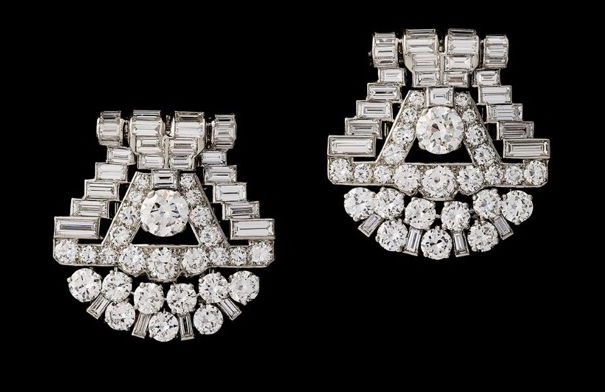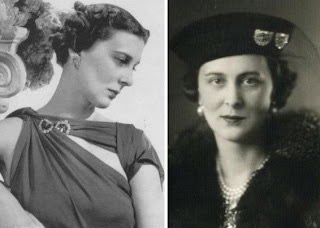Ziggurat, pyramid and arrowhead motifs quickly became part of the design vocabulary of Art Deco and can be found in all forms from architecture to jewellery.
A pair of platinum Art Deco style double clip brooches, Cartier, London, circa 1935
We find this pair of clips absolutely emblematic of the designs coming out of the Cartier London workshop in the early 1930s.


As we wrote in Understanding Jewellery The 20th Century referring to clips of the same period by Cartier: ‘We see a clear link between the design of this clip and the outline of the pyramid of Kukulkan at Chichen Itzá in Mexico. It is interesting to note that works of excavation and exploration on this pyramid started in 1931, as the combined effort of the Carnegie Institution for Science in Washington, D.C. and Mexican archaeologists’.

For comparable examples of Cartier diamond clips of the 1930s, see: David Bennett, Daniela Mascetti Understanding Jewellery The 20th Century (Publisher: ACC Art Books, 2021) pages 82-84.

written by

Further details:
A pair of platinum and diamond Art Deco style double clip brooches, Cartier, London, circa 1935
The outer edge with stepped baguette-cut diamonds, with an inner pavé-set A frame section centred with a single, round-cut diamond, weighing approximately 1.75cts, within a frieze of brilliant-cut and baguette-cut diamonds
Signed Cartier, London, with a fitting so the clips can be worn as a single ‘bow’ shaped brooch
Dimensions: each clip – height: 33.8mm | width: 33.8mm
For further information on the pair of platinum and diamond Art Deco style clip brooches:
info@understanding-jewellery.com
